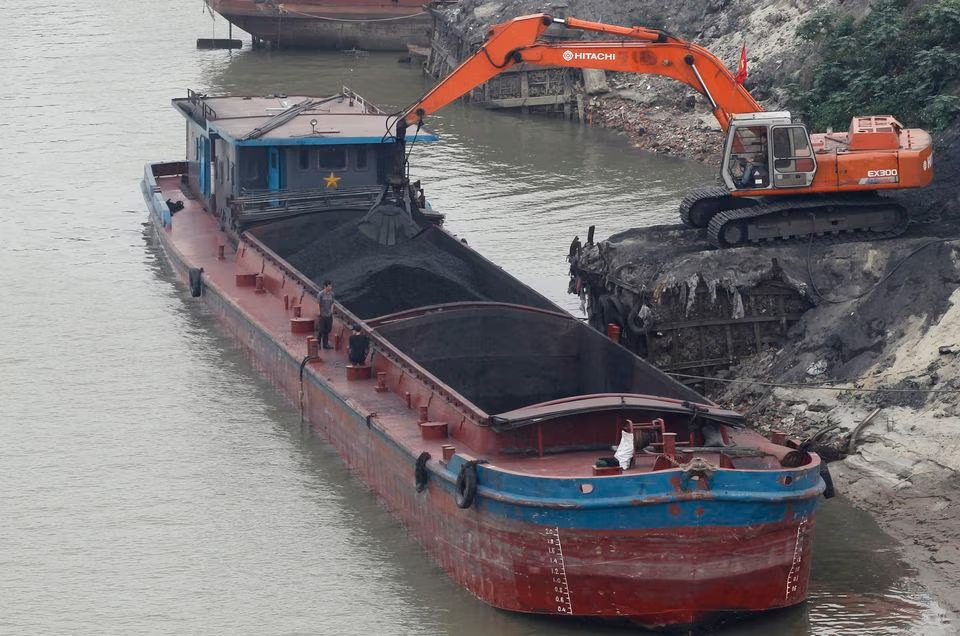JAKARTA/HANOI -- Plans to reduce the use of coal in Indonesia and Vietnam with financial support from Western donors face teething problems, which could have implications for the prospects of richer countries helping poorer ones shift to cleaner energy.
Both countries are negotiating schemes known as a Just Energy Transition Partnership (JETP), under which they'll get funding made up of equity investments, grants and concessionary loans from members of the Group of Seven (G7), multilateral banks and private lenders to help their energy transitions.
South Africa was the first country to reach a deal under the JETP, securing a $8.5 billion financing pledge in 2021. Indonesia secured a pledge of $20 billion and Vietnam $15.5 billion in deals struck in late 2022. Senegal has recently agreed a 2.5 billion-euro package.
Following is an update of the progress of the JETPs in Indonesia and Vietnam. Their efforts are likely to be a focus of debate at this year's U.N. climate change conference.
Indonesia
Indonesia aims to cut carbon emissions to 250 million metric tons for its on-grid power sector in 2030 and increase its share of renewable energy generation to 44% by 2030, according to its plan laying out guidelines to secure the funding.
Without the plan, Indonesia's greenhouse gas emissions are expected to reach more than 350 million tons in 2030.
Initially, Indonesia had agreed to cap and peak power sector's carbon emissions at 290 million metric tons by 2030, but authorities said that at the time, they had not understood the scope of power capacity outside the state utility's grid, in the hands of off-grid metal processors.
So private coal power station operators in the metal sector, with 13.74 gigawatt (GW) of capacity and another 20.48 GW planned, have been excluded from Indonesia's JETP plan.
How does Indonesia plan to deploy JETP funds?
Indonesia's JETP Secretariat had identified 400 priority projects for energy transition that it says require a minimum of $67.4 billion.
There will be five areas for investment that include accelerated renewable development, upgrade of transmission and early retirement of coal-fired plants.
Indonesia aims to shut 1.7 GW of coal power capacity through financing mobilised by the Climate Investment Funds and Asian Development Bank.
How would the JETP financing be arranged?
G7 donors as well as Norway and Denmark have pledged a total $10 billion public financing for Indonesia while the remaining $10 billion will come from public financing.
A total of $153.8 million was identified as grant funding. The rest of the public financing could include loans at below-market rates.
Private financing may include commercial loans that carry market rates, equity investment or other structures.
Vietnam
The JETP deal is expected to help Vietnam reach its peak greenhouse gas emissions from the power sector by 2030, earlier than a 2035 projection, capping the sector's CO2 emission at 170 million tons by 2030 and 101 million tons by 2050.
In July, Vietnam set up a secretariat led by the Minister of Natural Resources and Environment Dang Quoc Khanh and comprised of officials from the ministries of finance, industry and trade, and planning and investment, to implement the JETP.
What are the targets?
The JETP plan would cap the total installed capacity of coal-fired power plants at 30.13 GW by 2030 from 25.3 GW at the end of 2022.
The government wants to encourage the development of renewable projects and of electric vehicles.
What needs to be done?
Vietnam has prepared a draft plan listing reform commitments and more than 400 projects that could receive G7 money, including 272 in energy infrastructure such as wind and solar farms, power grid upgrades and battery systems.
Donors have encouraged Hanoi to be more ambitious with its reforms to facilitate renewable development and improve its grid.
How much has been offered to Vietnam?
G7 members and partners have offered public funding of nearly $8.08 billion to Vietnam as part of the $15.5 billion pledge that G7 countries and partners made in December, according to documents finalised by donor countries in late October and reviewed by Reuters.
However, of the offered public funding, only $321.5 million, or 2%, comes in the form of grants almost entirely from the European Union and EU states. Some $2.7 billion is in concessional loans at low interest, while most funds are in loans at market prices, which Vietnam has been reluctant to accept.
The remaining $7.5 billion is expected to come from private investors in costly loans, but those investments hinge on regulatory reforms and the quality of specific projects.





















































